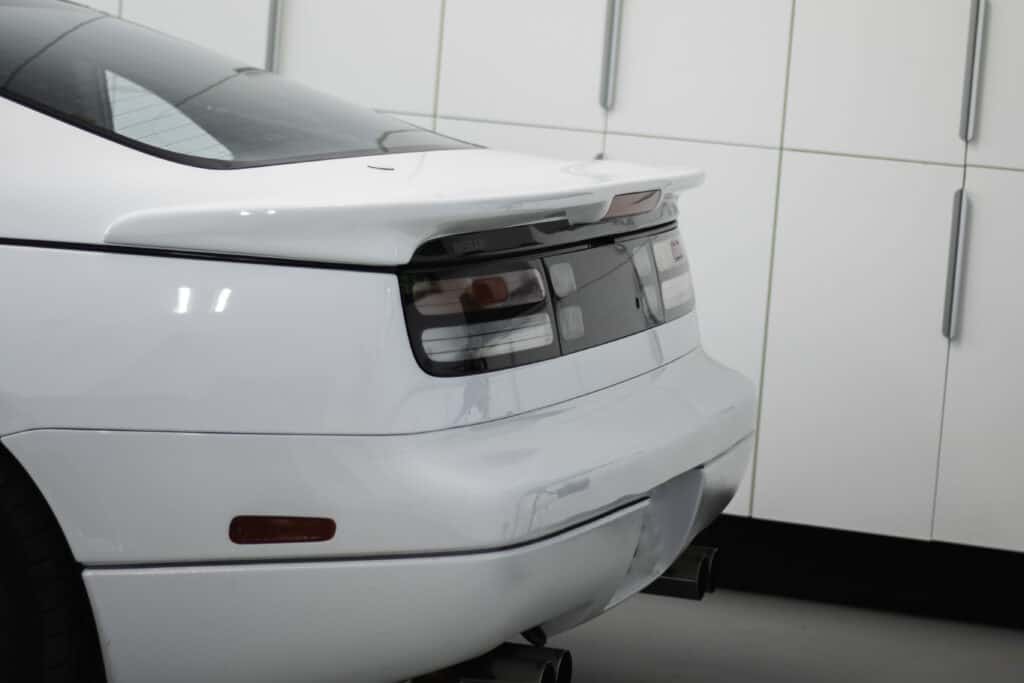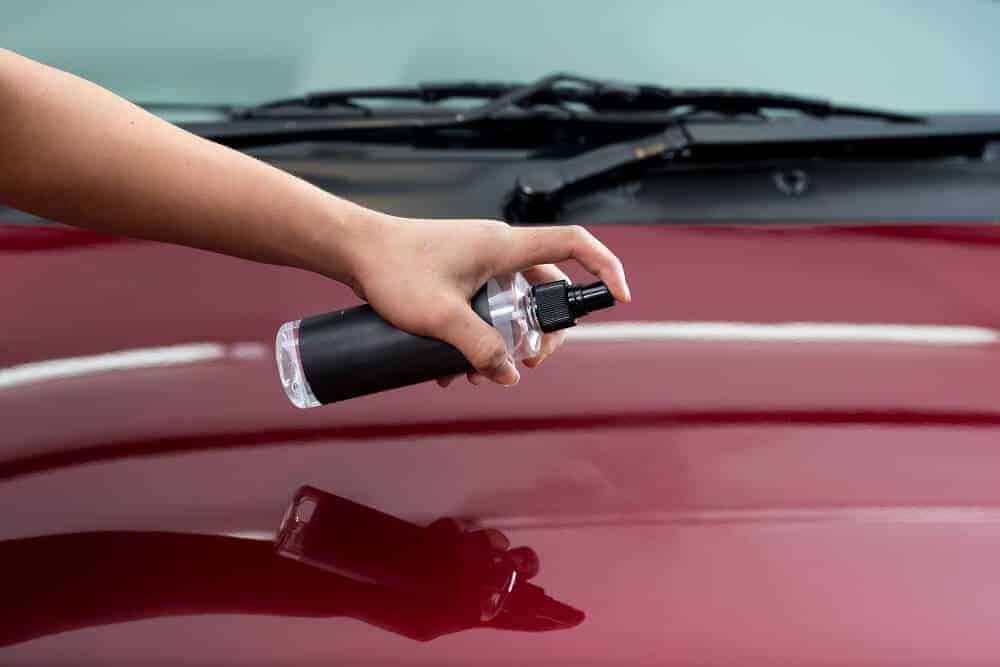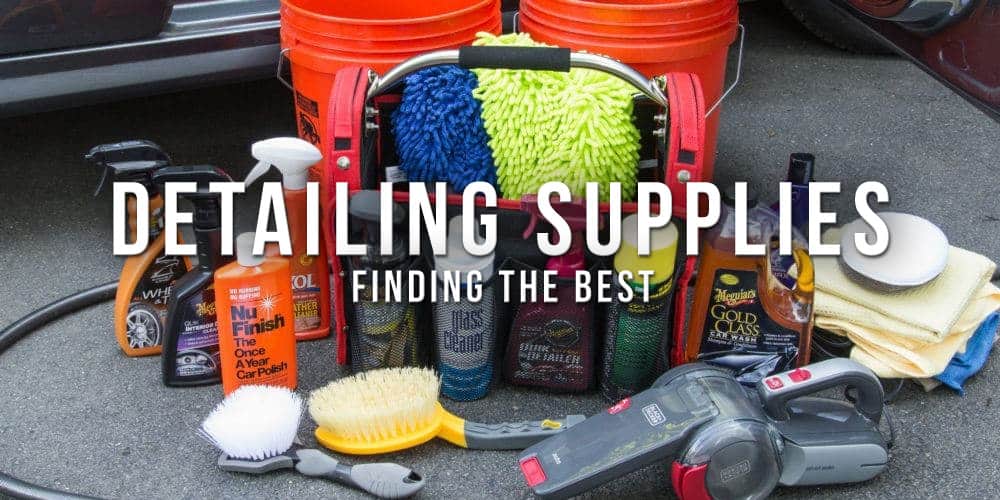Outside of politics, erectile dysfunction pills, capital punishment, tequila shots, and a few other “touchy” subjects, most situations in life provide us with some form of middle ground.
The automotive arena is no different. Whether you’re buying the latest and greatest turbo-diesel vehicle, looking to upgrade to a set of forged alloy wheels, or in search of paint protection products, the automobile industry is brimming with options.
When it comes to protecting a car’s clear coat, one of the more popular options to emerge in the past couple of decades has been paint sealant. Manufactured and sold by many of the same companies that produce the car waxes and polishes we all recognize, these razor-thin protectants offer respite from the open road’s ruthless onslaught.
But like any other paint protection or car care product, there are just as many crappy paint sealants on the market as there are solid offerings. This leaves car owners with a slurry of puzzling questions, and a massive amount of muddled answers.
Will a high-dollar car paint sealant weather the storm , when “Hurricane Dicksmasher” makes landfall next week? What in the hell is paint sealant made from anyways? Exactly what does this stuff do that a wax or ceramic coating can’t? Does it go on easy like Sunday morning? Is the spray-on stuff better than the paste or liquid?
Today, we’ll answer all of these questions and more, as we dive into the world of automotive paint sealants, in order to see what all the fuss is about.
Car Paint Sealant Explained

If you’re familiar with car wax and polish, then you may have met it’s younger, and longer-lasting cousin: Car paint sealant.
Commonly concocted from a blend of synthetic ingredients, polymers, and waxes, paint sealants come in paste, liquid, and spray-on form, and are engineered with UV ray exposure and surface shine in mind.
One of the primary reasons behind their rise in popularity, is that most paint sealants provide lengthier lifespans, and superior protection levels than traditional car waxes and polishes combined. Here’s a quick rundown of a few of the additional perks that are associated with paint sealants.
1. Increased Paint Depth
When applied to a painted surface that is in good condition, car paint sealants create a deep, high gloss finish that not only protects, but enhances shine.
2. Protects Longer Than Wax
Natural carnauba wax tends to last about 6 weeks on average, at which point it must be stripped away and reapplied. Synthetic car waxes offer slightly better results, with 3 month lifespans being the norm for most products. Since car paint sealants utilize polymer technology and synthetic ingredients, their life expectancy hovers in the 6–12 month range.
3. Respectable Protection Levels
Certain contaminants, like acid rain, bug splatter, and bird droppings contain intense levels of acidic compounds. If not removed in a timely fashion, these impurities can penetrate car wax and eat into a vehicle’s clear coating. Car paint sealant is designed to protect paint and clear coat from these kinds of acid-rich contaminants, absorbing the damage via its invisible barrier.
4. Boosts Resale Value
When a car owner uses a high grade car paint sealant, and both maintains and reapplies the product as required, the clear coating looks a million times better. Pristinely preserved paint is the immaculately maintained lawn of the automotive world, and when it comes to car resale values, it is guaranteed to provide a sizable boost in “curb appeal.”
5. Easier Cleaning
Paint sealants have solid hydrophobic (water repelling) properties. Standing water, dirt and debris, mud, soap residue, and more all roll of this stuff, thus making hand washing and drying a breeze.
Quick Nerd Note: Paint manufacturers have begun to integrate nano ceramic coating technology into various liquid, spray-on paint sealant products. This adds an additional level of hydrophobic water repellency to the product, and infuses a dash more protection to the surface being sprayed, but longevity ratings still remain a far cry from that offered by a real nano ceramic coating product.
How to Apply Car Paint Sealant

Since paint sealant products are similar in construction to liquid car waxes and polishes, they are usually applied in a similar fashion. Here are two of the most common ways of applying car paint sealant products to a freshly cleaned clear coated surface.
Hand Application

Photo Credit: Drive Auto Care/Facebook
The hand application method of a paint sealant is pretty much identical to that of applying car polish. In fact, many consumers will apply a polish first, then slap a paint sealant on top to lock-in shine and add additional protection.
Here is the three-step process for hand-applying a paint sealant:
1. Prep
The prep work for applying car paint sealant is simple. Just wash the car using the two-bucket method, spritz an isopropyl alcohol (IPA) spray solution on the surface to remove any debris or invisible contaminants, and wipe it away with a clean microfiber buffing cloth.
2. Apply
Applying paint sealant is also easy. Using a applicator sponge, apply a dime-sized drop or two of the product to the pad, and rub it across the painted surface in a crisscross pattern, completing one panel or section at a time.
3. Buff
Once you’ve applied the paint sealant product, and it has been allowed ample time to dry, test an inconspicuous area by rubbing your thumb over it. It should “haze” and then wipe clean. If there is no smudging or tackiness to be felt, you can proceed with the process of buffing the painted surface that you have just “sealed” with a clean microfiber towel.
Quick Tip: Never apply a paint sealant in a circular motion, or you may create paint swirl marks. That being said, once the paint sealant has fully cured, you may proceed with buffing in a circular motion if so desired, as it will be hard enough to resist the development of swirl marks.
Mechanical Application

The application of paint sealants with a polishing power tool and buffing pads is a process that does the exact same thing as the hand-applied method, but at a far more rapid rate.
Using a handheld electric polisher does require some additional prep work, such as clay media decontamination prior to the IPA spray solution application stage.
Just be forewarned. Due to the spiraling motion of buffing wheels, the potential risk of swirl marks developing is quite high with this far more expeditious method. The key to reducing the formation of clear coat swirl marks is making sure that the surface you are sealing is completely devoid of imperfections.
Are Paint Sealants Worth It?

Determining whether a paint sealer is “worth it” really breaks down to your DIY comfort level, desire to keep your vehicle protected, and your pocketbook.
Looking to keep things succinct, here are a few of the pros and cons to using a paint sealant as a shine enhancing surface protectant.
Paint Sealant Pros
1. Easy to Use
Since applying a paint sealant is a super simple process, transitioning from traditional car wax products to this more advanced modern methodology is about as seamless as possible. Just prep, rub, dry, and wipe.
2. Plays Well With Polishes and Waxes
If you’ve just installed a fresh coat of wax and/or paint polish, don’t hesitate to slap some paint sealant on top. People have been using all three of these products in conjunction with one another, which in turn, has led to the rise of all-in-one solutions. We’ll discuss this recent evolution in the paint sealant game in detail in a moment, as it harbors its own unique pros and cons.
3. Super Shiny Surfaces
When you apply a synthetic polymer sealant to a properly prepped paint surface, it will produce a very lustrous, glass-like appearance. There’s a reason why many people value paint sealants for their appearance properties prior to protection perks.
4. Decent Longevity
Most respectable DIY paint sealant products will hold up for about six months before requiring replacement. While pro-grade car paint sealants tend to last upwards of a year, they come at a premium, and require professional installation.
Paint Sealant Cons
While the positive attributes associated with paint sealant products are undeniably appealing, the following downsides must be taken into consideration as well, for there is no such thing as a “perfect surface protectant.”
There isn’t a paint protection product on the market that doesn’t come with its own compromises and conundrums. Knowing what you are willing to sacrifice or succumb to is just as important as picking the right product.
1. Amplifies Imperfections
Just like nano ceramic coatings and paint protection films (PPF), paint sealants tend to heighten the presence of paint imperfections instead of hiding them. Swirl marks turn to gouges, scratches become gorges, and rock chips transform into craters when a paint sealant hardens atop them.
2. Requires Substantial Prep Work
Having a clean surface is but one of the many requirements for proper paint sealant prep. Since blemishes will become all the more notable when a paint sealant has been applied, paint correction quickly becomes a mandatory form of recourse.
While you don’t need to strip-away that freshly applied layer of wax or use a high-dollar electric hand polisher, it’s important to implement a clay decontamination treatment for optimal results. This procedure, followed by a lengthy isopropyl alcohol wipe-down, will guarantee that the paint sealants can properly adhere to the surface. Once tallied up, all of this prep work can take upwards of 6–8 hours to complete, which for many people is a massive inconvenience.
3. Removal Woes
Removing paint sealant from a car requires both a ton of time and the procurement of the right gear. Specialty automotive soaps that have been formulated for safely stripping paint sealants can be both expensive and hazardous, which oftentimes requires more than one attempt before the sealant begins to lift.
4. Mediocre Surface Protection Ratings
When it comes to overall surface protection capabilities, paint sealants sit squarely in the center. In one corner, you’ve got natural car wax, which does a far better job of adding shine and deflecting UV rays, than it does at repelling road contaminants and flying debris.
Standing on the other side of the ring is paint protection film, which despite its steep price point, retains the ability to repel rock chips and surface scratches, along with a lengthy list of chemicals and contaminants. Paint sealant is the middle ground between the two, and is therefore is often labeled as an “acceptable” form of surface protection.
5. Does Not Work Well With Ceramic Coatings… At All
While certain paint sealants do contain trace amounts of silica (SiO2), there is not a paint sealant on the planet that is compatible with a separately installed ceramic coating. This is primarily due to the fact that most sealants are oil-based, and therefore will not work in conjunction with a fully cured ceramic coating product, or even with a ceramic coating that has been spread on top.
When to Use Car Paint Sealant

For those who feel that a paint sealant strikes the best balance for their busy schedule, as well as the needs of their automobile, the following situations are when they will benefit the most from these sorts of detailing products.
Brand-New Vehicle Owners On a Budget
If you’ve just purchased a brand-new car, and are planning on logging a hefty amount of windshield time, a paint sealant is an entry-level product you might want to consider. Having a brand-new automobile on hand means that you will not need to conduct any paint correction or clay decontamination procedures, and can skip straight to the wash and IPA wipe-down stages.
Wintry Weather and Extreme Heat Scenarios
Repelling road salt and deflecting harmful UV rays are two strong suits for paint sealants. If you live in an a super hot environment that sees a shit-ton of sun, or an area of the world that routinely gets blasted with a wintry mix, a paint sealant might provide the paint protection you crave. Just make sure that these protectants get stripped away in their entirety every spring and autumn, or you’ll have quite the unsightly disaster on your hands.
Parting Shots

So is paint sealant really worth it? That really depends upon what you are in search of in a paint protection product, and whether you value your time or money more.
Most DIY car paint sealants run anywhere between $25–40, which from a pricing standpoint, falls right in the middle between cans of carnauba wax and consumer-grade nano ceramic coatings.
However, if you don’t own a vehicle with an immaculate exterior, the amount of time and energy that you’ll have to invest in prep work is substantial. There’s also the issue of having to remove paint sealants every 6–12 months, which from a labor and time viewpoint, adds a hefty amount of strain to the situation.
Nano ceramic coatings, like Armor Shield IX, may require much of the same surface prep work, but they last much longer, and repel a wider range of chemicals, contaminants, and even scratches. You could also opt to take the paint protection film (PPF) route, but you would have to be prepared to drop thousands of dollars on the pro install alone.
This leaves you with either a paint sealant or a nano ceramic coating as your best automotive surface protection option. Car wax doesn’t cut the kimchi when the going gets tough, graphene oxide coatings still don’t seem to do much, and things like microplastic pollution and diesel exhaust continue to destroy our cars.













3 comments
Roy
CHASE
You don’t need to remove sealants every season as they eventually break down and are removed naturally. Also the wax goes on over the sealant otherwise when the wax breaks down after a week the sealant goes off with it
You don’t need to remove sealants every season as they eventually break down and are removed naturally. Also the wax goes on over the sealant otherwise when the wax breaks down after a week the sealant goes off with it
Mr.Tints
Thanks for sharing the knowledgeable blog post with us. You have explained about home window tinting in a very simple way. I got to know that every home owner can turn old window to window tinting. This will save our house from harmful UV rays in a summer time. Now, I no longer have to worry about it because my home is protectes.
Thanks for sharing the knowledgeable blog post with us. You have explained about home window tinting in a very simple way. I got to know that every home owner can turn old window to window tinting. This will save our house from harmful UV rays in a summer time. Now, I no longer have to worry about it because my home is protectes.